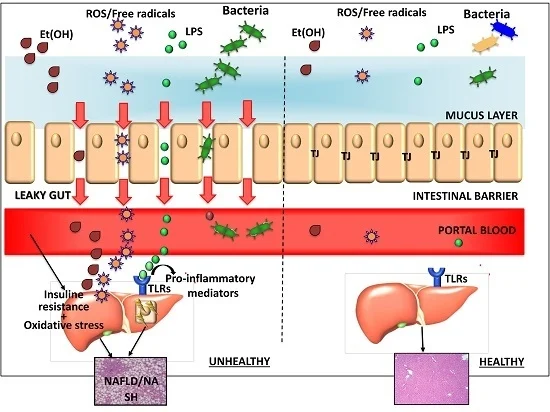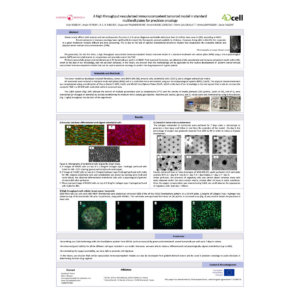Introduction
The gut-liver axis is the bidirectional interaction that exists between the gut and its microbiota, as well as the liver, and is the outcome of the integration of signals created by nutritional, genetic, and environmental factors.

How to culture vascularized & immunocompetent 3D models in a standard Multiwell
Microphysiological system gut-liver axis
Using a Microphysiological system to simulate gut-liver axis enables to study and recreate the phenomenon closer to real human physiology which is great to move away from animal models and help us understand metabolic disorders better.
Abstract
The authors state that “The interaction between the gut and the liver, often known as the gut-liver axis, play crucial roles in modulating the body’s responses to the xenobiotics as well as progression of diseases. Dysfunction of the axis can cause metabolic disorders as well as obesity, diabetes, and fatty liver disease.
During the progression of such diseases, inflammatory responses involving the immune system also play an important part. In this study, we developed a three-tissue microphysiological system (MPS) that can accommodate three different cell types in separated compartments connected via fluidic channels in a microfluidic device.
Using computational fluid dynamics, geometry of fluidic channels and flow conditions were optimized for seeding and culturing different cell types in the three-tissue MPS. Caco-2 (gut), RAW264.7 (immune), and HepG2 (liver) cells were seeded and cultured in the chip.
Stimulation of the gut cells in the MPS with lipopolysaccharide (LPS) resulted in induction of inflammatory response and production of nitric oxide (NO) in all connected chambers. The anti-inflammatory effect of luteolin was demonstrated.
Our study demonstrates that the three-tissue MPS can recapitulate the inflammatory responses involving the gut, liver and immune cells.”.
References
Jeon JW, Choi N, Lee SH, Sung JH. Three-tissue microphysiological system for studying inflammatory responses in gut-liver Axis. Biomed Microdevices. 2020 Sep 11;22(4):65. doi: 10.1007/s10544-020-00519-y. PMID: 32915326.
FAQ
The gut-liver axis is defined as the bidirectional interaction that occurs between the gut, its microbiota, and the liver. This complex relationship is the outcome of integrated signals. These signals are created by various nutritional, genetic, and environmental factors. The interaction between the gut and the liver is involved in modulating the body’s responses to foreign substances, which are known as xenobiotics. It also participates in the progression of certain diseases. Dysfunction within this axis can be the cause of several conditions. These include metabolic disorders, obesity, diabetes, and fatty liver disease. Inflammatory responses are also part of the disease progression linked to this axis.
A microphysiological system, or MPS, is used to simulate the gut-liver axis. This approach allows the phenomenon to be recreated in a way that is closer to real human physiology. Such models are beneficial for moving away from animal models in research. They also help us gain a better understanding of metabolic disorders. Inflammatory responses, which are involved in the progression of diseases like obesity and diabetes, are a key part of the axis. An MPS can be designed to study these specific responses. The system was developed to accommodate multiple cell types to represent the different organs. This provides a new way to observe these complex interactions outside of a human body.
A microfluidic device was developed to hold three different cell types. These cells were placed in separated compartments. Fluidic channels connected these compartments, allowing for communication between the cell types. The geometry of these channels, along with the flow conditions, was carefully refined. This refinement was achieved using computational fluid dynamics. The process was intended to find the best conditions for seeding and culturing the cells within the three-tissue MPS. The specific cell types chosen for the system were Caco-2, representing the gut. RAW264.7 cells were used for the immune component. Finally, HepG2 cells were used to represent the liver.
An experiment was conducted using the connected three-tissue MPS. The gut cells, Caco-2, were stimulated with lipopolysaccharide, also known as LPS. This stimulation successfully caused an inflammatory response within the system. The production of nitric oxide, or NO, was observed. This production was not limited to the gut chamber; it was detected in all of the connected chambers. This result showed that the MPS could represent the inflammatory responses that involve the gut, liver, and immune cells. In a further test, the anti-inflammatory effect of a substance called luteolin was also shown within the chip. This demonstrates the system’s utility for studying these pathways.





